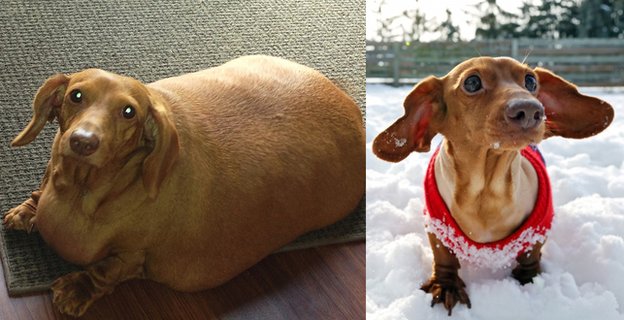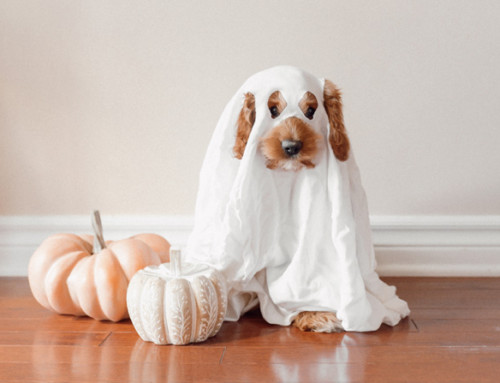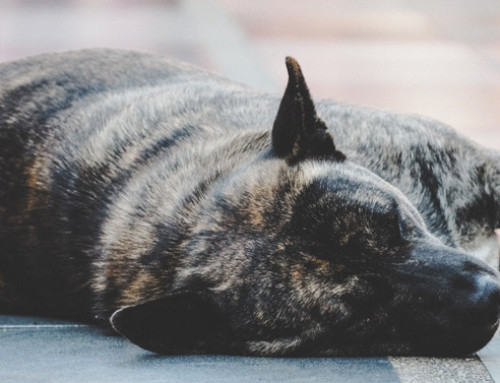Reading the story of Dennis the not so miniature Dachshund reminds us that dogs are no different when it comes to the health hazard of being overweight. After being fed a diet of junk food, poor Dennis weighed in at 56kg – almost 5 times the size of a normal dog of his breed. He was depressed and puffed out and apart from a new diet to help him lose weight and a special exercise regime he needed surgery to remove excess skin.
How do you help dogs lose weight?“If your dog is overweight, there are several things you can do to get them back on track. One way is to make sure they get only two meals a day and only the correct portion each time. Another option is to make sure they get plenty of exercise, which really is the key to weight loss whether it’s in dogs or in humans.” |
Many people are unsure whether their dog or cat is fat or not. So the first step is to get educated! Here are some tips to help you tackle the bulge in your dog or cat, and prevent him becoming a Dennis!
1. Speak to your vet: No, I’m not promoting any vet practice, but excess weight can be caused by other health conditions, so it is important to rule them out. Some conditions can cause your pet to eat too much, become lazy and as a result gain weight. Rule out other health factors before you do anything else.
2. Weigh your pet. It’s important to have a baseline, and to track progress. You need to know whether your efforts are reaping rewards or not. You’ll have a “scientific” way to see if you’re really cutting back food and being honest and accurate about it. If the results aren’t there, you need to know that, too, so you can dig deeper for medical causes.
3. Don’t leave food out all the time. Measure the desired amount of food (more on that below), put it down for 15 minutes or so, and then pick up the food. One meal twice daily is all a healthy adult dog needs. And if you have multiple pets, you need to separate them when you feed them. An idea is to put one pet in the bathroom or a laundry room and close the door, and the other in a different room.
4. Get your dog to work for his food. Get rid of the bowls, and buy food puzzles and use them instead of bowls. They also provide a great form of mental stimulation and play.
5. Exercise. All dogs need to get panting tired at least twice a day. However, before you exercise your dog, be sure to clear it with your vet, and get some guidelines. If your dog is exercise intolerant or fat, before you exercise consulting your vet is even more important.
6. Portion control. Diet food isn’t always necessary, but portion control is. Unless your pet has a medical problem, he is obese because you’re giving him too much food. Get him medically cleared, ignore the portions on the bag, measure every single bit of food you give him, and start gradually reducing it by the amount your vet recommends.
Read more about the story of Dennis here. And learn about whether dog insurance from Petsecure is right for you here.







That is totally true, “food is not love” I have to undertant that, I’m so hapoy when they are hapoy eating what they want. But I will start to feed them in the right way.
Thank you for your feedback!